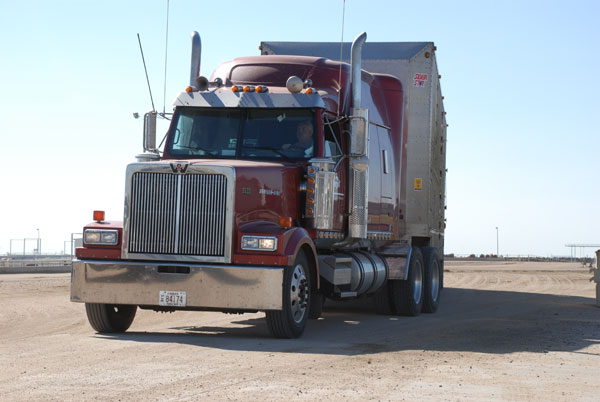Truckers have always been essential to our economy; their importance has just gotten some extra publicity during the current COVID pandemic. New rules should help lift regulation burdens causing them stress.
May 21, 2020

In an effort to keep America moving as much as possible when businesses are closed and people are house-bound, truck drivers now have more flexibility in getting products moved across the country.
That relief comes in the form of updated hours of service (HOS) rules from the U.S. Department of Transportation’s Federal Motor Carrier Safety Administration (FMCSA) for commercial motor vehicle (CMV) drivers.
“These updated hours of service rules are based on the thousands of comments we received from the American people. These reforms will improve safety on America’s roadways and strengthen the nation’s motor carrier industry,” said FMCSA Acting Administrator Jim Mullen.
The new HOS rules apply to all haulers, including livestock. NCBA has worked with FMCSA to make allowances for the unique needs of livestock.
According to NCBA, two positive items included in the rulemaking that might be helpful to some haulers are the 7 and 3 split on drive/rest (split sleeper berth) and the way the adverse driving conditions clock will now run (expands your total day clock by two hours if you run into adverse conditions).
“There are a few references in the document to requests by livestock groups, but they did not grant any of our requests, including a more flexible break-up of time via the split sleeper berth,” according to NCBA. “They also suggested that we should use team drivers to fix our current concerns with not having enough drive time to get livestock safely where they need to go. They also indicate that livestock haulers already have lots of special accommodations including an exemption from Electronic Logging Devices.”
First adopted in 1937, FMCSA’s hours of service rules specify the permitted operating hours of commercial drivers. In 2018, FMCSA authored an Advanced Notice of Proposed Rulemaking (ANPRM) to receive public comment on portions of the HOS rules to alleviate unnecessary burdens placed on drivers while maintaining safety on our nation’s highways and roads. Subsequently, in August 2019, the agency published a detailed proposed rule which received an additional 2,800 public comments.
Based on the detailed public comments and input from the American people, FMCSA’s final rule on hours of service offers four key revisions to the existing HOS rules:
The agency will increase safety and flexibility for the 30-minute break rule by requiring a break after 8 hours of consecutive driving and allowing the break to be satisfied by a driver using on-duty, not driving status, rather than off-duty status.
The agency will modify the sleeper-berth exception to allow drivers to split their required 10 hours off duty into two periods: an 8/2 split, or a 7/3 split—with neither period counting against the driver’s 14‑hour driving window.
The agency will modify the adverse driving conditions exception by extending by two hours the maximum window during which driving is permitted.
The agency will change the short-haul exception available to certain commercial drivers by lengthening the drivers’ maximum on‑duty period from 12 to 14 hours and extending the distance limit within which the driver may operate from 100 air miles to 150 air miles.
FMCSA’s final rule is crafted to improve safety on the nation’s roadways. The rule changes do not increase driving time and will continue to prevent CMV operators from driving for more than eight consecutive hours without at least a 30-minute break.
In addition, FMCSA’s rule modernizing hours of service regulations is estimated to provide nearly $274 million in annualized cost savings for the U.S. economy and American consumers. The trucking industry is a key component of the national economy, employing more than 7 million people and moving 70% of the nation’s domestic freight.
The new hours of service rule will have an implementation date of 120 days after publication in the Federal Register.
The complete final rule is available here.
Source: USDOT, which is solely responsible for the information provided and is wholly owned by the source. Informa Business Media and all its subsidiaries are not responsible for any of the content contained in this information asset.
You May Also Like



